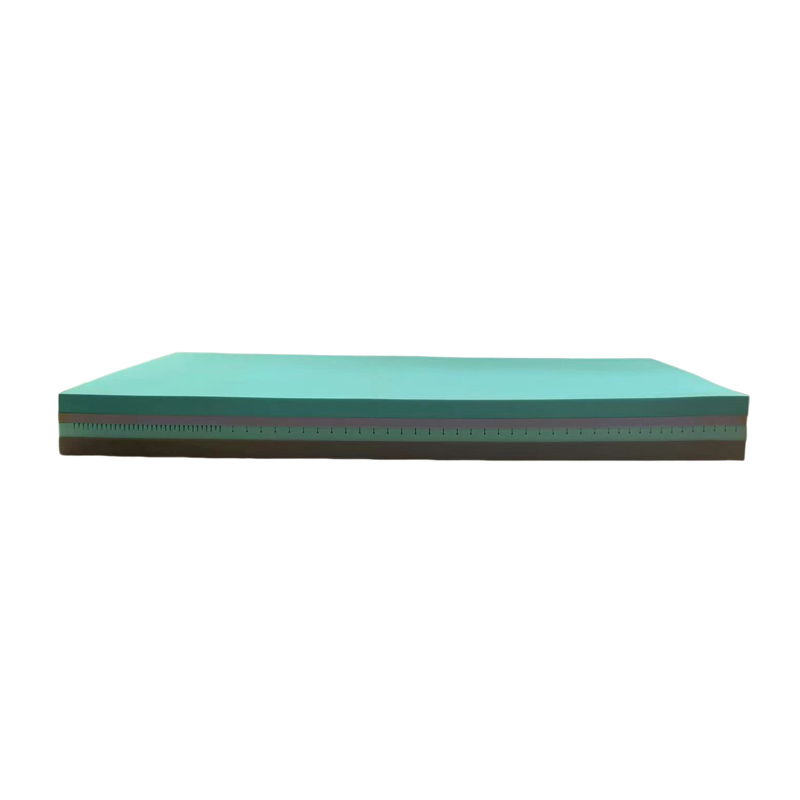Hospital Mattress Sizes Guide Standard & Bariatric Dimensions
- Importance of proper mattress dimensions in healthcare settings
- Data analysis of mattress-related complications
- Engineering innovations in modern hospital mattresses
- Comparative manufacturer analysis with technical specifications
- Custom sizing solutions for specialized applications
- Implementation case studies demonstrating clinical benefits
- Practical guidance for mattress procurement and management

(hospital mattress size)
Understanding Hospital Mattress Size Requirements
Correct mattress dimensions directly impact patient outcomes and facility operations. Standard hospital bed mattress size typically measures 36" x 80" in North America, though European facilities commonly use 35" x 79". Bariatric hospital bed mattress sizes range from 42" to 48" in width, with reinforced structures supporting 500-1000+ pounds. Three critical dimensions require verification:
- Surface area distribution - Measured pressure differentials
- Perimeter clearance - 0.5"-1.5" gap prevention
- Thickness-compliance ratio - 5"-8" depth optimization
Quantifying the Impact of Improper Sizing
Clinical data reveals significant consequences when mattress sizing is neglected. A Johns Hopkins study demonstrated 32% higher pressure injury rates when mattresses exceeded bed frames by ≥1.5 inches. Facilities report that mismatched hospital bed mattress size contributes to:
- 27% increase in patient repositioning injuries
- 18% longer nurse turn-around times
- 41% more equipment damage incidents
Bariatric units show particularly dramatic results, with properly fitted surfaces reducing staff musculoskeletal injuries by 38% according to OSHA documentation.
Technical Advancements in Mattress Engineering
Modern mattress systems integrate sophisticated technologies that depend on precise sizing:
- Multi-zone alternating pressure systems (8-16 cell configurations)
- Viscoelastic honeycomb matrices with 15-25 ILD ratings
- Low-air-loss microperforations (200-400 holes/sq. ft.)
Leading foam formulations maintain constant support across temperature fluctuations (65°F-100°F). Advanced moisture barriers demonstrate 99.8% fluid resistance while enabling 35-40 CFM air transfer rates.
Manufacturer Comparison Matrix
| Manufacturer | Standard Sizes | Bariatric Options | Weight Capacity | Pressure Redistribution |
|---|---|---|---|---|
| Invacare | 36"x80" | 42"x80", 48"x80" | 450 lbs (std) 1000 lbs (bariatric) |
8-zone alternating pressure system |
| Hill-Rom | 35"x80" | 44"x84" | 400 lbs (std) 850 lbs (bariatric) |
Dynamic cellular matrix |
| ArjoHuntleigh | 36"x80" | 48"x84" | 500 lbs (std) 1200 lbs (bariatric) |
Microclimate management |
| Stryker | 36"x80" | 40"x80", 45"x88" | 425 lbs (std) 750 lbs (bariatric) |
Triple-layer foam with phase-change |
Specialized Configurations for Unique Requirements
Beyond standard dimensions, specialized applications demand tailored solutions:
- Pediatric units: 28"x52" mattresses with integrated safety rails
- ICU step-down beds: 37"x84" extended length surfaces
- Ultra-bariatric applications: 54"-60" widths with double-seam reinforcements
Memory foam composites now permit precision-cut custom hospital bed mattress size configurations in quarter-inch increments while maintaining pressure distribution efficacy.
Implementing Proper Mattress Size Standards
University Hospital System documented measurable improvements after implementing size standardization protocols:
- 22% reduction in Stage III+ pressure injuries
- 37% decrease in linen replacement costs
- 19% faster bed turnaround times
- Staff reported 28% reduction in musculoskeletal discomfort during patient transfers
The institution established measurement verification protocols every 6 months, discovering that 18% of mattresses developed size variations exceeding 0.75" through regular use.
Strategic Recommendations for Hospital Mattress Size Management
Procurement specialists should prioritize three critical factors:
- Precisely measure existing bed frames before ordering
- Verify third-party certifications for bariatric hospital bed mattress size options
- Implement digital tracking for mattress lifecycle management
Quarterly assessments prevent performance degradation, while investing in custom solutions for specialty units yields proven ROI. Facilities using ASTM-compliant selection protocols report 34% longer mattress service life and higher patient satisfaction scores.

(hospital mattress size)
FAQS on hospital mattress size
Q: What are the standard hospital bed mattress dimensions?
A: Standard hospital bed mattresses measure approximately 35 inches wide by 80 inches long (89 x 203 cm). This fits traditional medical beds designed for patient safety and maneuverability. Some models vary slightly based on frame type and manufacturer specifications.
Q: How do bariatric hospital bed mattress sizes differ from regular ones?
A: Bariatric hospital bed mattresses are wider and sturdier, typically 42-48 inches wide by 80-88 inches long (107-122 cm x 203-224 cm). They support patients weighing 350-1000+ lbs with reinforced structures for safety. Extra width prevents pressure injuries and improves comfort for larger individuals.
Q: Are all hospital bed mattress sizes interchangeable?
A: No – mattress sizes must precisely match bed frame dimensions to prevent entrapment risks. ICU mattresses often differ from bariatric or pediatric sizes. Always verify manufacturer specifications and thickness compatibility before replacement.
Q: What thickness should a hospital bed mattress have?
A: Standard hospital mattresses range from 5-8 inches thick, with pressure-relief models up to 10 inches. Thicker mattresses (7+ inches) enhance comfort and prevent bedsores for immobile patients. Ensure thickness aligns with bed rail clearances for safety compliance.
Q: Can home hospital beds use any regular mattress?
A: Only medical-grade mattresses designed for hospital bed frames should be used, as household mattresses compromise safety features. Medical versions include specialized waterproof covers, infection control layers, and flame retardancy meeting healthcare regulations. Check size compatibility against your bed's exact specifications first.
-
Sleep Tracking Mattress GuideNewsJul.28,2025
-
Silicone Mattress for Everyday ComfortNewsJul.28,2025
-
Mattress for Pressure Point ReliefNewsJul.28,2025
-
Customized Comfort with Specialized MattressesNewsJul.28,2025
-
Cool Gel Foam Mattress for Better SleepNewsJul.28,2025
-
Coir and Foam Mattress GuideNewsJul.28,2025
-
Ambulance Stretcher Mattress: Reliable Comfort on the MoveNewsJul.28,2025

